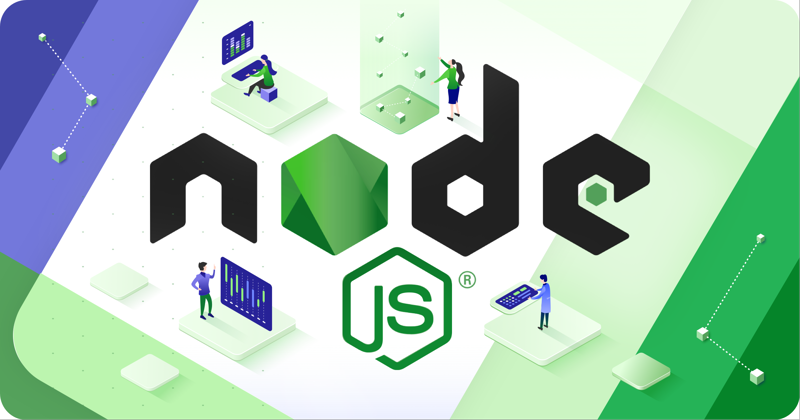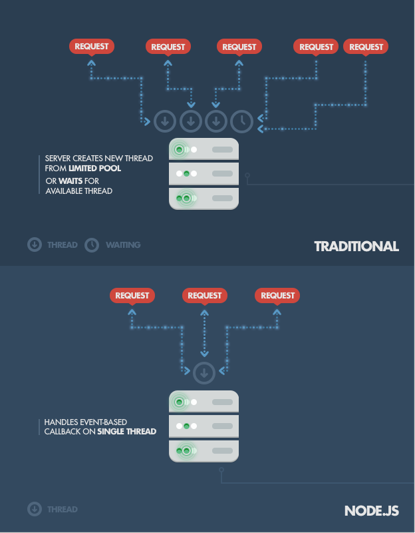Top uses of Node.js Javascript Runtime Environment
Top uses of Node.js Javascript Runtime Environment:
After over 20 years of stateless-web based on the stateless request-response paradigm, we finally have web applications with real-time, two-way connections.

What is Node.js ?
-
Free and Open source server environment
-
Compatible with various platforms (Windows, Linux, Unix, MAcOS,etc)
-
Implements Javascript on Server
-
Uses asynchronous programming
Node.js is widely popular today for building realtime robust applications that executes javascript code outside of a browser. It is single threaded, memory efficient, asynchronous and non-blocking. Node.js allows us to run scripts server side resulting in a production of dynamic web page content .
What can Node.js do?
-
Generate Dynamic web page content
-
Generate and operate upon files on the server
-
Collect form data
-
Operate upon the data in the database
Download node.js here: Node.js
Also Read: Programming Language to learn in 2019
Below we have provided top implementation areas and uses of Node.js:
Streaming:
Today there are ton of video and audio streaming websites and all of them work on the same concept.
Video and audio files are uploaded and needs to be processed at the same time in the server side to make the process faster. This is where the Node.js comes in. Node.js helps by processing the video while the file is being uploaded thus saving a lot of time. Node.js helps in real time processing and proxying between different data sources.

Fast and Scalable Applications:
If you are planning on building a program that is light weighted and faster at the same time then, Node.js could be a great tool and it is widely implemented for that very same purpose. Its ability to process many requests at a time smoothly with lower latency is one of the mesmerizing feature of Node.js which makes it great for modern applications.
Proxy Server:
Node.js is popularly implemented as a server side proxy which handles large amount of simulataneous connections in a non-blocking manner. Especially useful for proxying different services with different response times.
Online Games:
As we know that Node.js is very impressive with real time processing and that’s what really matters for creating a good online browser game. With Node.js we can create some amazing online games that makes the Flash, Java or other programs like Shockwave applet outdated. Even multiplayer games can be designed with Node.js.
CHAT Applications:
Chat can be taken as one of the typical real time, multi user application and a sweet-spot example for Node.js. A chat application is usually light weighted with high traffic running across distributed devices.
An independent chat application can be created using the Node.js. So what Node.js does is that it handles concurrent connections, reacting to events and maintaining fluidity in user experience.
Queued Inputs:
Lets take a scenario where you are receiving a high amount of concurrent data resulting a slow responsive bottlenecked database. In such a case Node.js can be handy in handling such concurrent data and connections. So basically in short with Node.js we can push the database operation to the side to be dealt later and proceeding as if the operation succeeded.
So, we can see that Node.js is widely popular for developing real-time apps that work on a high volume of data and require low latency. Hope this article will be helpful for anyone who is starting his/her career in web development or anyone who is interested in this field.
Also Read: Git Commands you must learn
Angular 7: Create new project using Angular 7
HOW TO EXTRACT TEXT FROM IMAGE USING JAVASCRIPT (OCR with Tesseract.js)?
